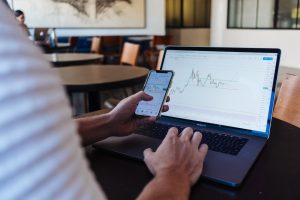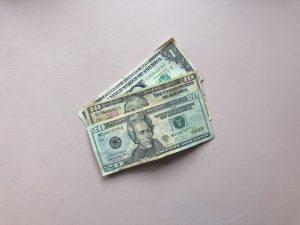Forex trading, also known as foreign exchange trading, has become one of the most popular ways to invest and make money online. With over $5.3 trillion traded daily, it’s no surprise that many traders are turning to automation to help them make more profitable trades. But just how much of forex trading is automated? In this article, we’ll explore the different types of forex trading automation and the impact it has on the industry.
First, let’s define what we mean by forex trading automation. Essentially, it’s the use of computer programs or algorithms to make trading decisions on behalf of the trader. There are three main types of automation in forex trading:
1. Algorithmic trading – This is the most common type of forex trading automation. It involves using computer programs to analyze market data and make trading decisions based on predefined rules. For example, an algorithm might be programmed to buy a currency pair when its price crosses above a certain moving average, and sell when it crosses below. Algorithmic trading is often used by institutional investors and hedge funds, but it’s also becoming more accessible to individual retail traders.
2. Copy trading – This type of automation involves copying the trades of other traders. The trader selects a successful trader to follow, and their trades are automatically copied into the trader’s own account. This can be done through a social trading platform or a managed account service. Copy trading is a popular option for traders who don’t have the time or expertise to analyze the markets themselves.
3. Expert advisors – Expert advisors (EAs) are computer programs that run on the MetaTrader platform, which is the most popular trading platform for forex traders. EAs are programmed to make trading decisions based on certain parameters, such as technical indicators or price action patterns. They can be customized by the trader to suit their individual trading style and risk tolerance.
So, how much of forex trading is automated? It’s difficult to know for sure, as there are no official statistics on the subject. However, it’s safe to say that algorithmic trading is the most prevalent form of automation in forex trading. According to a report by the Bank for International Settlements, algorithmic trading accounted for 70% of forex trading volume in 2019.
Copy trading is also becoming more popular, particularly among retail traders. According to a survey by Finance Magnates, 41% of retail forex traders use copy trading as part of their trading strategy.
Expert advisors are also widely used, particularly by traders who use the MetaTrader platform. In fact, MetaQuotes, the company behind MetaTrader, claims that there are over 2,000 EAs available for download on their platform.
So, why are traders turning to automation? There are several reasons:
1. Speed – Automation allows traders to react to market conditions much faster than they could manually. Algorithms can analyze market data and make trading decisions in a matter of milliseconds, which is crucial in a fast-moving market.
2. Emotion-free trading – One of the biggest advantages of automation is that it removes the emotional component from trading. Traders can be prone to making irrational decisions based on fear or greed, but algorithms are not subject to these emotions.
3. Backtesting – With automation, traders can backtest their strategies using historical market data to see how they would have performed in the past. This allows them to fine-tune their strategies and optimize their risk-reward ratio.
4. Accessibility – Automation is becoming more accessible to retail traders, thanks to the rise of social trading platforms and managed account services. This means that traders with limited experience or capital can still benefit from the advantages of automation.
Of course, there are also some drawbacks to automation. One of the biggest concerns is the risk of over-optimization. This is when a trader spends too much time fine-tuning their strategy based on historical data, to the point where it no longer performs well in real-world conditions.
Another concern is the risk of technical glitches or errors in the algorithms, which can result in significant losses. Traders also need to be aware of the potential for black swan events, such as unexpected political or economic developments, which can cause market volatility and disrupt trading strategies.
In conclusion, it’s clear that automation is playing an increasingly important role in forex trading. While there are some risks involved, the benefits of speed, emotion-free trading, and accessibility make it an attractive option for many traders. As technology continues to evolve, we can expect to see even more sophisticated forms of automation in the forex market.






